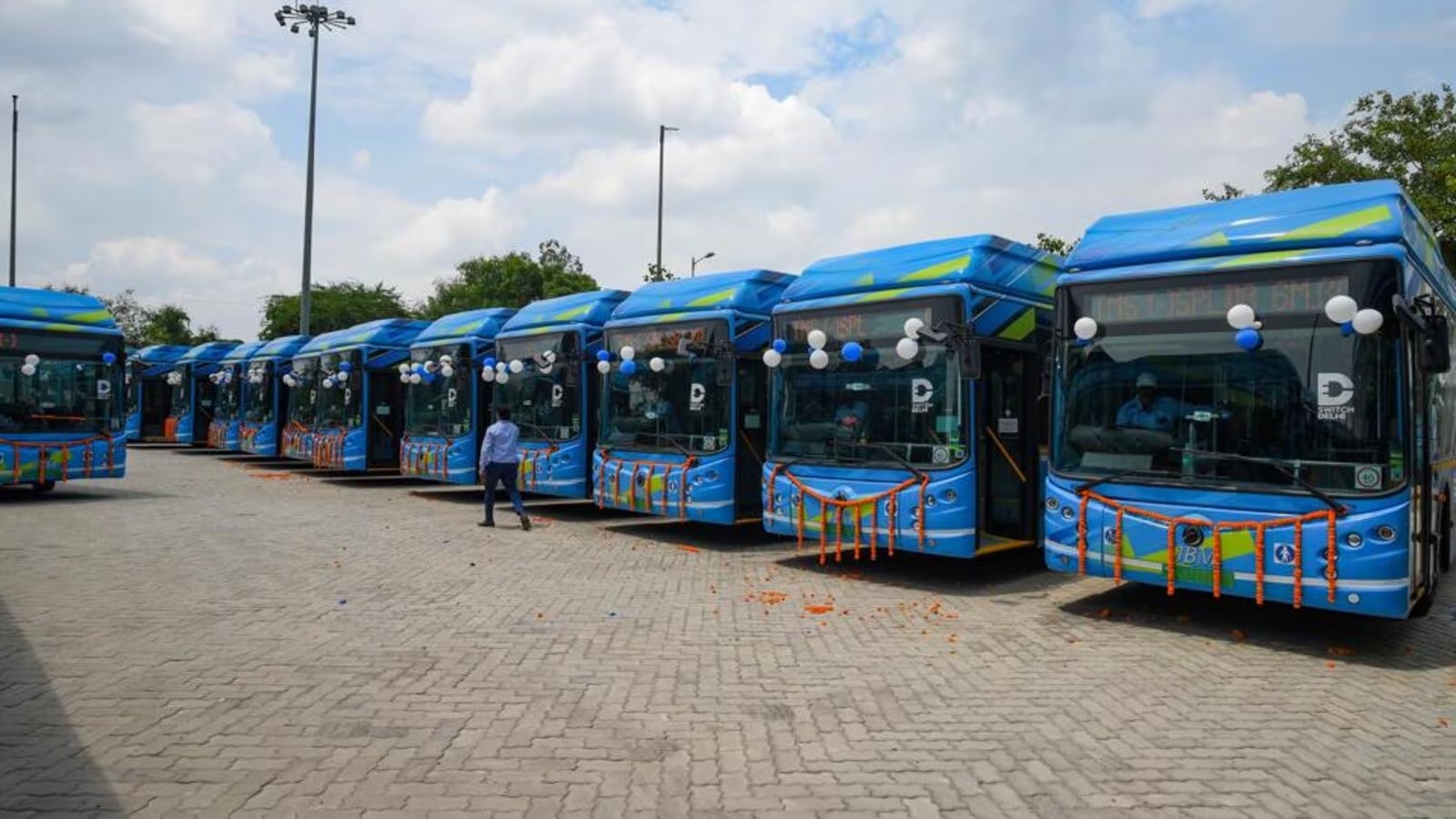Source : PTI | New Delhi: Improvement in public transport facilities, smog guns at construction sites and strengthening the Delhi Pollution Control Committee (DPCC) as an institution are some of the measures suggested by environmentalists to combat the deteriorating air quality in the national capital. Delhi’s air quality was recorded in the ‘poor’ category for the fifth consecutive day on Friday and is likely to deteriorate in the coming days due to unfavourable meteorological conditions, according to monitoring agencies.
Environmentalist Bhavreen Kandhari said consistent efforts to address sources of pollution and implement systemic changes are required to combat air pollution in Delhi NCR.
Speaking about dust pollution around construction sites, Kandhari said that smog gun should be a mandatory equipment at construction sites throughout the year.
“Consistent efforts to address pollution sources and implement systemic changes are required. Smog towers, guns, and sprinklers are like applying band-aids on a deep fracture. We need smog guns, but they should be mandatory equipment at construction sites throughout the year, not mere photo ops,” Kandhari told PTI.
“While the idea of AQI (air quality index) display monitors on construction sites was announced in 2021, it remains a headline without any action. We must uphold promises in both letter and spirit,” she added.
Delhi’s 24-hour AQI stood at 261 on Thursday, while several areas recorded their AQI in the ‘very poor’ category. Delhi’s 24-hour average AQI was 256 at 4 pm on Thursday, 243 on Wednesday, and 220 on Tuesday.
According to the Centre’s Air Quality Early Warning System for Delhi, the city’s air quality is likely to deteriorate to ‘very poor’ category on Saturday.
Kandhari alleged that while the Delhi government mentions planting saplings every year, they also grant permissions to cut down trees simultaneously.
“The action plan mentions planting a million saplings, but the government simultaneously grants permissions to cut down trees. It’s time to shift away from a car-centric approach and invest in a robust, effective, affordable public transport system to clean the air. Our policies must align with this vision,” she said.
Last week, the Commission for Air Quality Management, a statutory body responsible for proactively implementing the pollution control plan known as the Graded Response Action Plan (GRAP), directed authorities in the NCR to increase parking fees to discourage private transport and enhance the services of CNG or electric buses and metro trains amid a likely increase in pollution levels.
This action is part of Stage II of GRAP which is implemented when the AQI is predicted to turn ‘very poor’.
GRAP categorises actions into four stages: Stage I ‘poor’ (AQI 201-300); Stage II ‘very poor’ (AQI 301-400); Stage III ‘severe’ (AQI 401-450); and Stage IV ‘severe plus’ (AQI >450).
Founder and Director of Chintan Environmental Research and Action Group Bharti Chaturvedi said that the government “should not be relying” on GRAP and the public transport in the national capital should be improved.
“We cannot be relying on GRAP measures. The government should focus on public transport because that is a game changer in terms of combating pollution. Looking at the pace at which the current government is bringing electric buses, it will take two to three more years to bring five thousand e-buses in Delhi,” Chaturvedi told PTI.
She further said that the DPCC needs to be strengthened as an institution and that, vacant positions in the committee should be filled in order to function more effectively.
“DPCC capacity also needs to be improved. It should be strengthened as an institution and vacant positions in the committee should be filled. We also need a massive public movement to combat pollution,” she said.
The environmentalist further added that there should be health warnings from the government’s end about pollution and it’s impact.
The Delhi government launched a campaign to curb vehicular pollution on Thursday, a year after Lieutenant Governor V K Saxena put it on hold, questioning its effectiveness.
A range of emission inventory and source apportionment studies carried out in Delhi in the past few years suggested that on-road vehicular exhaust emissions account for nine to 38 per cent of PM2.5 emissions in the capital.
“After Dussehra each year, Delhi’s air quality worsens. There are significant fluctuations in weather conditions, and temperatures drop, leading to lower air quality. The main concern is whether GRAP is effectively reducing air pollution or not. Using methods like sprinkling water and anti-smog guns seem to be more effective and shows results,” analyst at Centre for Research on Energy and Clean Air, Sunil Dahiya told PTI.
Meanwhile, Executive Director of Research and Advocacy at the Centre for Science and Environment (CSE), Anumita Roychowdhury said it is necessary to address the key gaps in action and ensure integrated public transport-supported by walking and cycling infrastructure.
“There is a need to improve the public transport, ambitious target for fleet electrification for zero tailpipe emissions, restraining personal vehicle usage with stringent parking fees and low emissions zone strategy to reduce vehicular pollution,” Roychowdhury said.
She mentioned other key gaps in the action must be addressed by including clean energy transition across industry and households, 100 per cent waste collection and segregation, recycling and remediation of legacy waste at dump sites.
“Finally, it is necessary to scale up the stringent multi-sector action plan across the entire NCR region and beyond to minimise regional influence on local air pollution of Delhi,” she said.
Delhi’s air quality had turned ‘very poor’ on Sunday for the first time since May, mainly due to a drop in temperature and wind speed, which allowed pollutants to accumulate.











